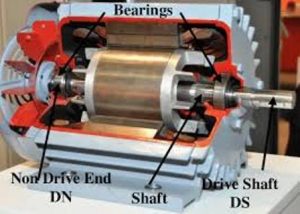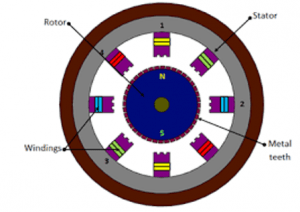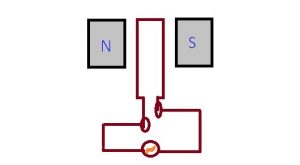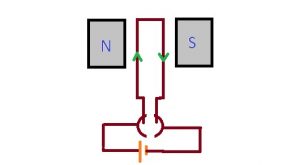An electrical motor is one kind of machine, used to convert one form of energy to another like from electrical to mechanical. These motors are categorized into two types based on the input supply. For instance, if the given power supply is a DC then, then it is called a DC motor. Similarly, if the given input power supply is an AC one, then it is called as AC motor. This article discusses the difference between ac motor and dc motor.
Difference between AC Motor and DC Motor
The difference between these motors mainly includes what is an ac motor, dc motor, working of ac and dc motors and its differences.
What is AC Motor?
AC motor is one kind of electrical machine, used to change the energy from input electrical form to an output mechanical form. It is used in small rating motors and other industrial purposes.
What is DC Motor?
AC motor is one kind of electrical machine, used to change the energy from input DC electrical energy to mechanical energy. It is commonly used for household purposes like in fans, and blowers.
Working of AC Type
The working principle of the AC type motor is “faraday’s law of electromagnetic induction”. An alternating motor can be operated in two ways I,e with a stationary armature and rotating field winding and the other way is by arranging field winding stationary and armature winding rotating. A normal AC motor uses rotating armature and stationary field winding. The machine includes various parts which are displayed in the following figure.

Motor Parts
The rotating armature type motor consists of an armature slip rings, and brushes. In this type, the coil of armature winding is given an AC supply that allows the current to flow in the winding. As this coil is under the influence of a magnetic field, some force is exerted on it. Due to this force, the coil gets rotated in the magnetic field. The winding structure of the machine is shown in the figure.

ac motor winding structure
The slip rings are used to allow the current to alter between the coil sides so that it can develop uniform unidirectional torque. An AC motor with a stationary armature and rotating field winding is more advantageous compared to a rotating armature type. This type has more efficiency and fewer losses. Here, the Ac supply is given directly to the stator winding. This kind of motor working is given below.

AC Motor Operation
This stator develops a rotating magnetic field in the air gap. This field interacts with the field winding and induces some emf in the winding according to the principle of mutual induction. The emf induced develops some flux in the winding. Both the fluxes tend to develop a force that produces a unidirectional torque that allows the rotor to rotate smoothly.
Please refer to this link to know more about DC Motor MCQs
Working of DC Type
The DC type motor working principle is the Lorentz force equation. The armature winding placed on the rotor is given an input DC supply. When this supply is given, the coil is about to carry current in the windings. Due to this current in the coil, some force is exerted on the coil because of the Lorentz force equation. Based on this equation, a coil that carries the current under the magnetic field influence it will exert some force upon it. The direction of force is found by using Fleming’s Left-hand rule. This motor operation is given in the following image.

DC Motor Operation
The flow of current within the coil side is AB and it is inside whereas CD is outside. According to the current direction, by fleming’s rule force at the side, ABis upwards and at side CD it is downwards. This force allows the coil to develop to a torque inside the magnetic field. But the exerted when the coil is at 90 degrees to the magnetic field is not constant. It produces a non-uniform force such that the coil cannot develop uniform torque. To avoid this, the er of coils are placed together such that a uniform force is developed which in turn develops torque is unidirectional.
Thus, this article provides an information on what is a DC and AC motor. And also, we had also discussed the difference in the working of DC and AC motor. Here is a question for you, what are the different kinds of AC and DC motors?
Leave a Reply